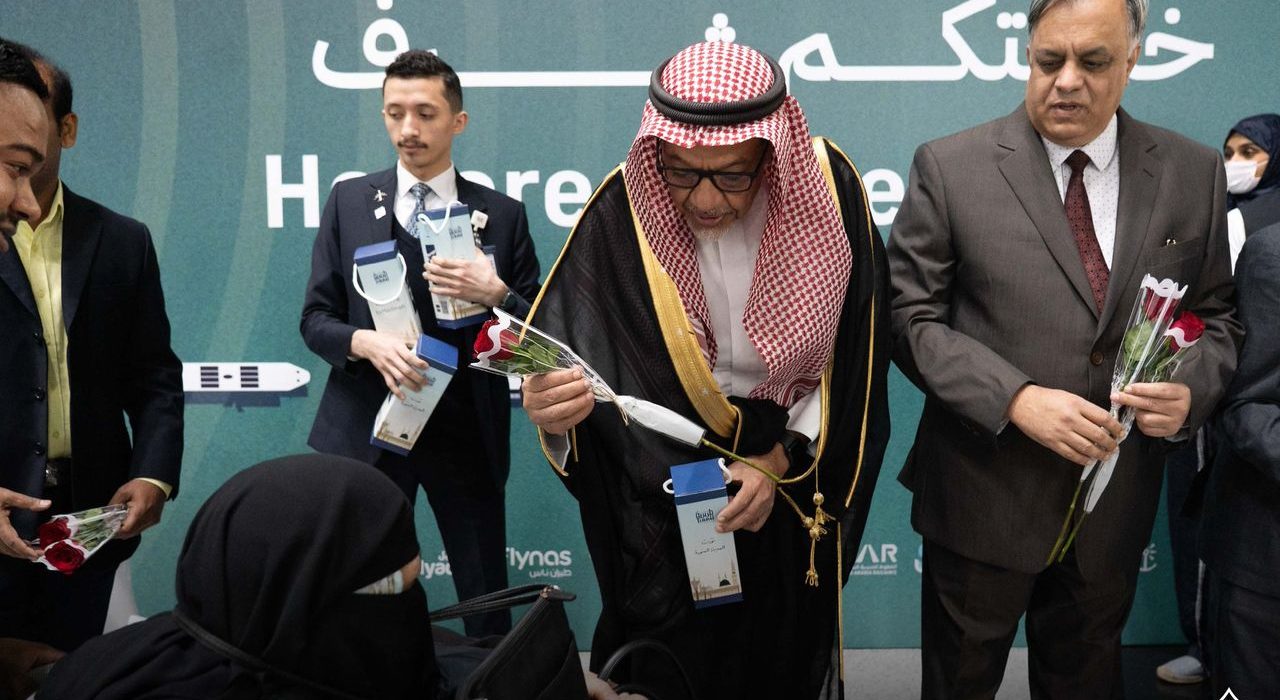The Kingdom of Saudi Arabia is setting a new global benchmark as it prepares for Hajj 2025, the world’s largest annual pilgrimage. With millions of Muslims from every corner of the globe journeying to the holy cities of Mecca and Madinah, the Kingdom has launched its most ambitious operational rollout to date, a fusion of ultra-modern technology, world-class transportation infrastructure, advanced security, and seamless coordination on a scale never before attempted in any religious or civilian event.
This year, the planning is not just massive, it is militarily precise, digitally intelligent, and spiritually sensitive. With Hajj rituals just weeks away, the world is watching as Saudi Arabia transforms one of Islam’s five pillars into a model of large-scale human logistics and innovation.
Transportation on a Monumental Scale
Moving over three million pilgrims in a span of days across multiple holy sites requires not just planning, it demands orchestration. For Hajj 2025, Saudi Arabia is deploying:
• 25,000+ buses and 9,000+ taxis, ready to transport pilgrims across city corridors, holy precincts, and lodging areas with minimal delays.
• 2 million+ pilgrims will be moved specifically via the Al-Mashaer Al-Mugaddassah Metro, a pilgrimage-only metro system designed to run exclusively during Hajj, transporting pilgrims between Mina, Arafat, and Muzdalifah within tight timelines.
• A total of 3 million airline seats have been allocated to pilgrims, involving global aviation coordination with carriers across dozens of countries.
• 35 high-speed electric trains, operated by the Haramain High-Speed Railway, will connect Makkah and Madinah, drastically reducing travel time for pilgrims visiting both sacred cities.
This combination of ground and air mobility is unprecedented and designed to minimize stress, delays, and overcrowding while preserving the dignity of the pilgrim experience.
Biometric Systems, Surveillance & AI-Powered Oversight
Technology is the beating heart of this year’s pilgrimage management strategy. Saudi authorities are not only managing the inflow of people but also enhancing security, identity validation, and real-time crowd intelligence through:
• Biometric registration at 11 international airports across 7 countries, enabling pre-clearance and identification of pilgrims before they even board their flights.
• On-ground, over 300 road monitors and 20+ advanced AI-powered surveillance systems will provide live oversight of traffic conditions, crowd movements, and potential incidents, with instant alerts fed into command centres operating 24/7.
This ensures that any form of logistical disruption, health emergency, or security threat can be identified and neutralized in real time, before it escalates.
Smart Infrastructure: Rebuilding the Roads to the Sacred
Saudi Arabia has invested deeply in infrastructure upgrades. A total of 7,400 kilometers of roads leading to and from holy sites have undergone rehabilitation using Full Depth Reclamation Technology, an advanced engineering technique that reduces costs by 40–70%, extends road life, and allows for quick, high-quality rebuilding.
These roads are now wider, safer, and more resilient to the intense pressure of continuous pilgrim traffic, especially under harsh weather conditions.
Safety, Comfort, and On-Demand Support Systems
Hajj 2025 is not just about managing movement, it’s about ensuring peace of mind for every pilgrim. For this reason, the Saudi government has introduced:
• 24/7 inspection and support teams at over 20 key locations, equipped to offer guidance, manage emergencies, and resolve pilgrim complaints.
• Dedicated Pilgrim Lounges at 11 major airports, allowing for rest, spiritual orientation, and processing services in a calm and welcoming environment.
• A unified hotline (19929), available around the clock, to provide pilgrims with immediate help on transport, lost items, accommodation confusion, or health emergencies. This number is being promoted across terminals, mosques, hotels, and buses for easy access.
Digital Integrity in a Sacred Journey
In the age of deepfakes and misinformation, authorities are taking no chances. All registration processes are tied to verified biometrics, facial recognition, and real-time data verification systems. This ensures that the person arriving to perform Hajj is the same person who registered, a critical measure against fraud and impersonation, especially given past concerns about proxy pilgrims.
Additionally, surveillance and data analytics tools are being used not for intrusion, but for protection, to anticipate needs, prevent overcrowding, and safeguard human dignity.
A Testament to Human and Spiritual Coordination
Hajj is the fifth pillar of Islam, and for over 1,400 years, Muslims have aspired to fulfill this duty. Today, it is no longer a journey of hardship, but one of sublime orchestration. With pilgrims arriving from over 150 countries, speaking different languages and coming from diverse cultures, Saudi Arabia’s feat lies in uniting all these moving parts under one seamless experience.
This is not just a pilgrimage. It is a global convergence of faith, supported by modern science, logistics, and governance.
In the words of a CIC Saudi spokesperson, “Every bus route, every biometric scan, every digital monitor is not just a technical system, it is part of a sacred trust to make this journey as safe, dignified, and spiritually fulfilling as it is intended to be.”
As the first batches of pilgrims arrive and more prepare to depart from their homelands, the Kingdom of Saudi Arabia has one clear message to the world: The road to Mecca is open, and no effort has been spared to make this the most secure, seamless, and spiritual Hajj ever witnessed.
